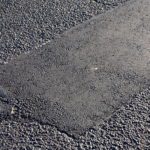Concrete patching can be a time-consuming process, but it is an important one. If you use a systematic approach, the results will be a concrete surface that not only looks great but also stands the test of time.
Here’s a step-by-step plan for tackling a concrete patching job
Step 1: Identify the cause(s) of the damage
First and foremost, you must determine the cause of the damage. If you fail to identify and eradicate the root cause of the problem, you will continue to have problems with your concrete surface even after spending hours performing repairs.
Concrete damage could be caused by a variety of factors, including poor design, low-quality materials, and poor construction, among many others. As a result, before embarking on your DIY concrete repairs, it is critical to identify the causes and implement the necessary solutions to eliminate the cause.
Step 2: Figure out the extent of the damage for Concrete Patching
The next step is to assess the extent and severity of the damage. You will need to figure out how much concrete has been damaged and how it will affect the structural stability of the concrete.
Step 3: Assess the need for repairs
Not all damaged concrete warrants emergency repair. Before you go about fixing your concrete, there are many factors that you need to consider.
If the damage is severe and can pose safety risks, the concrete should be patched right away. In any other case, repairs can be made on a non-urgent basis. Or, if the problems are identified early on, they can be fixed with much less effort.
Step 4: Choose the right repair method
There are a number of methods that can be used to patch your concrete, but you should choose the one that best solves your problem. You can determine the ideal solution based on the previous three steps.
Step 5: Time for some prep work before Concrete Patching
It is critical to prepare the damaged concrete surface for repairs to ensure the repair work is successful. Even the best concrete patching products might not work well if you cut corners with your surface prep.
Step 6: Fix it using Concrete Patching
When all of the previous steps have been completed, and the concrete surface has been properly prepped, you may now apply your preferred concrete repairs method.
Step 7: Do not forget to cure the repair
Most—if not all—concrete repairs will necessitate curing. Curing is the final step in the process and ensures that the time and effort you put into following steps 1 to 6 will pay off in the long run.
 You can pretty much guarantee the success of your concrete repairs by following this systematic approach. When you know that the process you used is solid, you will feel so much better about the time, money, and effort you have put into concrete repair.
You can pretty much guarantee the success of your concrete repairs by following this systematic approach. When you know that the process you used is solid, you will feel so much better about the time, money, and effort you have put into concrete repair.
When you are dealing with damaged concrete surfaces, concrete patching is a necessary evil. However, knowing exactly how to patch the surface will help ensure that your time, money, and effort are all well spent.
Address
Commonwealth Paving, 136 Outerloop, Louisville, Kentucky 40214
Phone: 502-459-7283, Fax: 502-456-2678
Opening Hours
| Monday | 9:00 AM – 5:00 PM |
| Tuesday | 9:00 AM – 5:00 PM |
| Wednesday | 9:00 AM – 5:00 PM |
| Thursday | 9:00 AM – 5:00 PM |
| Friday | 9:00 AM – 5:00 PM |
| Saturday | Closed |
| Sunday | Closed |







